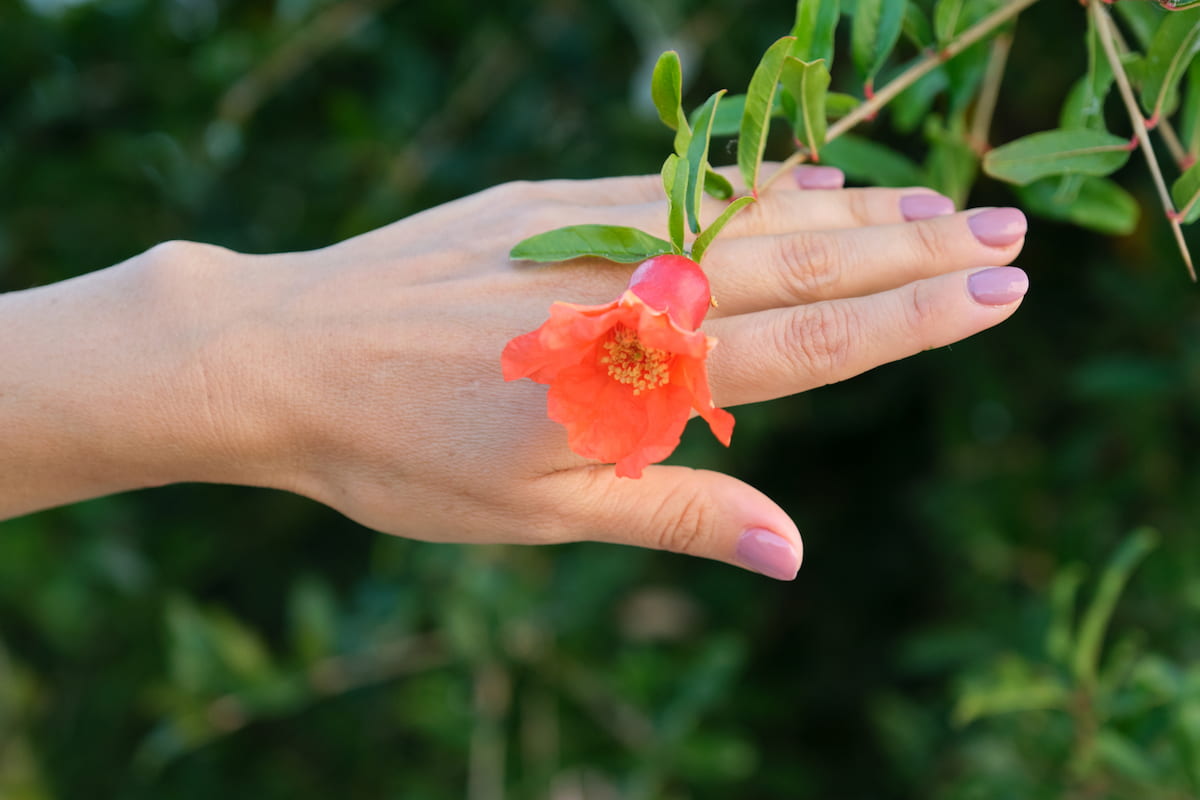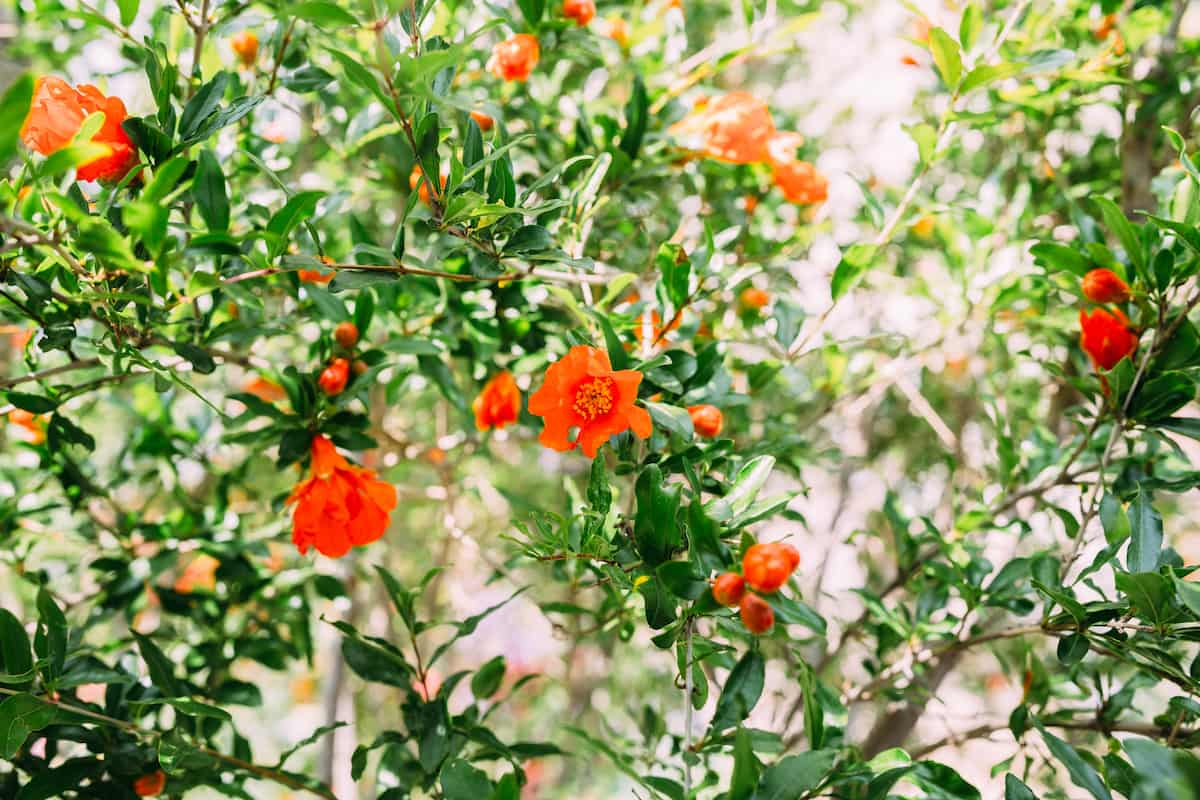Pomegranate is a popular fruit crop due to its rich nutritional and medicinal properties. However, a major challenge in pomegranate cultivation is the low number of female flowers, essential for fruit development. Increasing the number of female flowers can improve the crop’s productivity and yield. Hence, growers and researchers are constantly seeking ways to enhance the number of female flowers in pomegranate plants.

Techniques such as pruning, fertilization, water management, and plant growth regulators can increase female flowers. Understanding the pomegranate plant’s growth requirements and physiology is crucial in effectively implementing these techniques. By doing so, growers can improve the number of female flowers, increase productivity, and meet the growing demand for pomegranates globally.
How to Increase Female Flowers in Pomegranate
Introduction to Pomegranate Cultivation
Pomegranate (Punica granatum) is a highly valued fruit crop grown globally for its juicy arils, abundant in nutrients and antioxidants. The crop is in high demand and has export potential, making it profitable for farmers. Pomegranate grows best in a warm and dry climate, with well-drained loamy soil and a pH range of 5.5-7.5.
The plant can be propagated using seeds, cuttings, or grafting. Proper pruning, water management, and fertilization practices are necessary for high-quality fruit production, as the crop is susceptible to pests and diseases. With its many nutritional and medicinal properties, pomegranate cultivation offers a promising business opportunity for farmers.
Understand the Anatomy of Pomegranate Flowers
Pomegranate (Punica granatum) flowers are hermaphroditic, containing both male and female reproductive organs. The flowers are bell-shaped and have a diameter of 3-4 cm, with a range of colors from white to red. The flower has five petals, five sepals, and numerous stamens surrounding the pistil. The pistil’s stigma is divided into several lobes, each containing a receptive surface for pollen.
The ovary is situated at the base of the pistil and contains numerous ovules. Pollination occurs through insect or wind transfer, and the fruit develops from the ovary after successful fertilization. Understanding the anatomy of pomegranate flowers is crucial for successful cultivation and maximizing fruit yield. Proper management practices such as pruning, fertilization, and pest control can also improve flower development and fruit production in pomegranate crops.
Best Variety of Cultivation Pomegranate
Several varieties of pomegranate are. Some popular pomegranate varieties include Wonderful, Granada, Mollar de Elche, and Ako Rani. Others include Red Silk, Ruby, Angel Red, and Early Foothill. Sweet, White, Pink Satin, and Parfianka are also commonly grown. Purple Heart, King, Phoenicia, and Balady are some of the varieties cultivated in the Middle East. In India, Bhagwa, Ganesh, and Ruby are popular varieties. Finally, unique varieties like Turkish, Yemeni, and Azerbaijani are cultivated in their respective regions.
Optimal Growing Conditions for Pomegranate
Pomegranate cultivation requires specific growth conditions for optimal growth and yield. These include a hot summer with temperatures ranging from 25-40°C and a mild winter above freezing. The crop grows well in well-drained soils with a pH range of 5.5-7.5, preferably sandy loam.
Pomegranates are drought-tolerant but require regular watering during the growing season. Full sunlight for at least 7 hours daily is necessary for optimal growth and fruit development. The crop requires a balanced supply of nutrients, especially nitrogen, phosphorus, and potassium. Proper pest and disease management are crucial as pomegranates are susceptible to fruit flies, bacterial blight, and root rot.
In case you missed it: How to Increase Female Flowers in Tomato: Explained in 10 Simple Steps

Pomegranate Flowering Stage
The flowering Phase is crucial in pomegranate cultivation as it determines the yield and quality of the fruit. Pomegranate plants usually start flowering 2-3 years after planting and can continue to flower for several years. Flowering is triggered by cool temperatures during the winter months, followed by warm temperatures in the spring. The flowers are borne on the terminal ends of new shoots and develop into fruit after successful pollination.
Flowering requires proper water and nutrient management to ensure optimal fruit development. Pomegranate flowers are generally self-pollinating, but cross-pollination by insects can improve fruit set and yield. Proper pest and disease management is also essential during the flowering stage to prevent damage to the flowers and fruit.
Factors that Affect Less Female Flowers in Pomegranate
- Lack of sunlight can reduce the number of female flowers in pomegranate plants.
- Inadequate water supply or irregular watering can also affect flower development, resulting in fewer female flowers.
- Nutrient deficiency, especially a lack of phosphorus, can impact flower formation and reduce the number of female flowers.
- High temperatures during flower bud initiation can lead to abortion and decrease the number of female flowers.
- Pruning practices that remove too many branches or flower buds can limit the number of female flowers.
- Pest and disease infestation can cause flower drop and decrease the number of female flowers.
- Improper pollination or lack of pollinators can affect the formation of female flowers in pomegranate plants.
10 Simple Tips to Increase Female Flowers in Pomegranate
- Pruning: Regular pruning can help in inducing more female flowers.
- Proper fertilization: Balanced fertilization with adequate levels of potassium and boron can help increase the number of female flowers.
- Water management: Proper water management with regular and adequate irrigation can help promote flower bud formation and increase female flower development.
- Pollination: Ensuring proper pollination by bees and other insects can help increase the number of female flowers.
- Sunlight exposure: Full sunlight exposure to the pomegranate plant can help increase female flower development.
- Disease and pest management: Proper pest and disease management can prevent flower damage and promote female flower development.
- Adequate spacing: Proper spacing between plants can help improve light and air penetration, promoting female flower development.
- Use of growth regulators: The use of plant growth regulators like naphthalene acetic acid (NAA) and gibberellic acid (GA3) can help increase the number of female flowers.
- Maintaining soil pH: Maintaining a pH between 6.0-7.0 can help promote female flower development.
- Avoiding stress: Avoiding stress factors like drought, waterlogging, and extreme temperatures can help in promoting female flower development.
Manual Pollination of Pomegranate
Hand pollination is a simple technique to increase the number of female flowers in pomegranate plants and improve crop yield. The process involves manually transferring pollen from the anthers of male flowers to the sticky, receptive stigma of female flowers. Here are some tips for successful hand pollination:
- Monitor the pomegranate tree or trees regularly to determine when the flowers are ready for pollination. When ready for transfer, the pollen is easily brushed off the anthers.
- Use a small artist’s paintbrush or cotton swab to touch the pollen-containing anthers. The brush or swab will pick up small grains of pollen.
- Transfer the pollen grains to a female flower’s sticky, receptive stigma. The stigma is in bloom’s center and surrounded by numerous stamens; if you have multiple pomegranate plants, transfer pollen to as many receptive stigmas as possible.
- Repeat the transfer of pollen from the anthers to the stigmas nearly daily until pollen is no longer produced or stigmas are no longer receptive. Pollinated flowers lose their petals and develop into fruit that ripens within 5 to 7 months.
Hand pollination can occur in the morning when temperatures are cool, and the air is dry. It is essential to avoid damaging the flowers during the process. With regular hand pollination, pomegranate growers can increase the number of female flowers and ensure an optimal fruit set.
In case you missed it: How to Increase Female Flowers in Orange: Explained in 10 Simple Steps

Conclusion
Improving the number of female flowers in pomegranate plants is essential for increasing their productivity, and hand pollination is an effective technique to achieve this goal. Proper monitoring of the flowering stage, selection of appropriate tools, and correct timing of pollination are necessary to implement this technique successfully. Along with proper pruning, fertilization, and irrigation, following these ten simple steps can contribute to increasing the development of female flowers in pomegranate plants.
- Feed Your Flock for Less: Top 10 Tips to Save on Chicken Feed
- Ultimate Guide to Ossabaw Island Hog: Breeding, Raising, Diet, and Care
- Hatching Answers: The Top 10 Reasons Your Chickens Aren’t Laying Eggs
- Eggs and Economics: Breaking Down the Cost of Raising Backyard Chickens
- Defend Your Greens: Proven Methods to Keep Iguanas Out of Your Garden
- Ultimate Guide to Cinnamon Queen Chicken: A Comprehensive Guide for Beginners
- Ultimate Guide to California Tan Chicken: Breeding, Raising, Diet, Egg-Production and Care
- Ultimate Guide to Marsh Daisy Chicken: Breeding, Raising, Diet, and Care
- 10 Types of Chicken Farming Businesses You Can Start for Profits